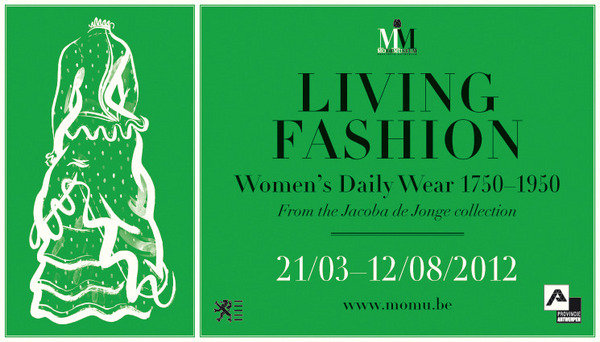Living Fashion
dal 20/3/2012 al 11/8/2012
Segnalato da
20/3/2012
Living Fashion
ModeMuseum Province of Antwerp - MoMu, Antwerp
Women's Daily Wear 1750-1950. On the basis of historical silhouettes from the extensive apparel collection of Jacoba de Jonge, the show sketches a picture of the relationship between the fashion ideals of the day and the clothing that people were actually wearing.

In the 19th century, the growing social importance of the middle classes brought with it a new group of wealthy citizens who wanted to show off their status through their clothing and behaviour. This stimulated consumption and fashionable activities amongst the women in these social circles. Travelling, sports, walking and shopping became new forms of passing leisure time, all requiring specific apparel. In addition to the clothes they wore, the organization of their days also followed fashion trends. Mornings were for indoor activities, the afternoons for visits and ‘outdoor activities’, and each moment of the day had its own particular dress code.
Taking part in ‘high fashion’ increasingly became a must for an ever-growing group of consumers, but these women did not simply let themselves be dictated by fashion. They also helped form fashion through their own changing customs and living habits. As they still do today, consumers were frugal and creative with ever-changing fashions. Dresses were remade and sometimes completely transformed to fit the new, fashionable silhouettes. Re-using fabrics was perfectly normal, even for the upper classes.
On the basis of historical silhouettes from the extensive apparel collection of Jacoba de Jonge, now almost entirely incorporated in the MoMu collection, we sketch a picture of the relationship between the fashion ideals of the day and the clothing that people were actually wearing.
Press contact:
David Flamée Press & PR T: +32 3 4702777 E: david.flamee@momu.be
Leen Borgmans Communication T: +32 3 4702776 E: leen.borgmans@momu.be
ModeMuseum Province of Antwerp - MoMu
Nationalestraat 28 - Antwerp
Hours: Tue-sat 10am-6pm
Normal entrance: 8 euro
Reduction: 6 euro
- 26 years: 1 euro
- 12 years: gratis



